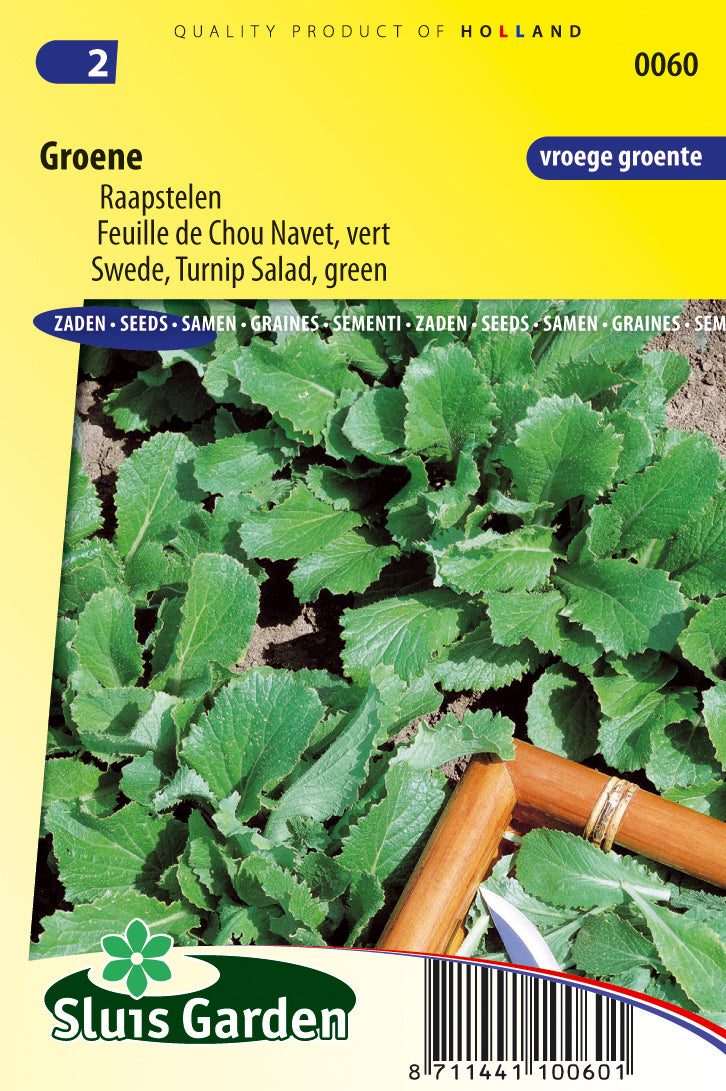1
/
of
1
Turnip-salad Green
Turnip-salad Green
Regular price
1.350 KWD
Regular price
Sale price
1.350 KWD
Unit price
/
per
Shipping calculated at checkout.
Couldn't load pickup availability
Here's a general guide on how to grow turnips and harvest their nutritious greens:
**1. Planting Time:**
- Turnips are cool-season crops. Plant seeds in early spring or late summer for a fall harvest.
**2. Soil Preparation:**
- Choose well-draining soil rich in organic matter. Turnips prefer slightly acidic to neutral soil with a pH between 6.0 and 7.5.
**3. Sunlight:**
- Turnips grow best in full sun but can tolerate partial shade.
**4. Planting Seeds:**
- Sow turnip seeds directly in the garden. Plant them about half an inch deep and 2-3 inches apart. Rows should be spaced around 12-18 inches apart.
**5. Watering:**
- Keep the soil consistently moist. Water regularly, especially during dry periods. Ensure the soil doesn't dry out, as consistent moisture helps prevent woody roots.
**6. Fertilization:**
- Turnips don't require heavy fertilization. Use a balanced fertilizer before planting, and side-dress with additional fertilizer when the plants are actively growing.
**7. Thinning:**
- Thin turnip seedlings to maintain proper spacing once they reach a few inches in height. Proper spacing helps each plant develop a well-formed root.
**Harvesting Turnips:**
**1. Root Harvest:**
- Harvest turnips when the roots are young and tender, usually around 2-3 inches in diameter. Larger turnips may become tough and woody.
**2. Leaf Harvest:**
- You can harvest turnip greens when they are 4-6 inches tall. Harvest outer leaves, allowing the inner ones to continue growing.
**Using Turnip Greens in Salads:**
- Turnip greens are nutritious and can be used in salads. Wash them thoroughly, chop or tear into bite-sized pieces, and incorporate them into your favorite salad recipes.
**Tips:**
- Rotate turnip crops yearly to prevent diseases and pests.
- Mulch around the plants to retain moisture and suppress weeds.
- Pay attention to potential pest issues such as aphids or flea beetles and address them promptly.
**1. Planting Time:**
- Turnips are cool-season crops. Plant seeds in early spring or late summer for a fall harvest.
**2. Soil Preparation:**
- Choose well-draining soil rich in organic matter. Turnips prefer slightly acidic to neutral soil with a pH between 6.0 and 7.5.
**3. Sunlight:**
- Turnips grow best in full sun but can tolerate partial shade.
**4. Planting Seeds:**
- Sow turnip seeds directly in the garden. Plant them about half an inch deep and 2-3 inches apart. Rows should be spaced around 12-18 inches apart.
**5. Watering:**
- Keep the soil consistently moist. Water regularly, especially during dry periods. Ensure the soil doesn't dry out, as consistent moisture helps prevent woody roots.
**6. Fertilization:**
- Turnips don't require heavy fertilization. Use a balanced fertilizer before planting, and side-dress with additional fertilizer when the plants are actively growing.
**7. Thinning:**
- Thin turnip seedlings to maintain proper spacing once they reach a few inches in height. Proper spacing helps each plant develop a well-formed root.
**Harvesting Turnips:**
**1. Root Harvest:**
- Harvest turnips when the roots are young and tender, usually around 2-3 inches in diameter. Larger turnips may become tough and woody.
**2. Leaf Harvest:**
- You can harvest turnip greens when they are 4-6 inches tall. Harvest outer leaves, allowing the inner ones to continue growing.
**Using Turnip Greens in Salads:**
- Turnip greens are nutritious and can be used in salads. Wash them thoroughly, chop or tear into bite-sized pieces, and incorporate them into your favorite salad recipes.
**Tips:**
- Rotate turnip crops yearly to prevent diseases and pests.
- Mulch around the plants to retain moisture and suppress weeds.
- Pay attention to potential pest issues such as aphids or flea beetles and address them promptly.
Share

